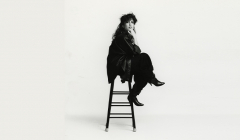
McCann brings The Final Copy of Ilon Specht to Prime Video
The film telling the untold story of the female copywriter who wrote L’Oreal’s iconic ‘Because I’m Worth It’ tagline debuts across global streaming platforms.

How can we use AI to ensure that the design work we produce stands out, rather than blend into a sea of conventionality?

Artificial intelligence is a hot topic in design, sparking countless discussions about its benefits and drawbacks. Much of this conversation focuses on a narrow lens of what AI can do for designers, how it can streamline workflows, generate ideas, or even automate entire processes – a dangerous world! But what if we flipped the script? Instead of asking what AI can do, let’s explore how it can help us understand what ‘not to do’. How can we use AI to ensure that the design work we produce stands out, rather than blending into a sea of conventionality?
This alternative perspective leverages AI as a tool for disruption. Disruption is central to the TBWA methodology, where the aim is to challenge norms and break free from established conventions. By using AI to analyse past and existing trends, designers can identify patterns and ensure they are not following them. This approach transforms AI from a creative assistant to a provocateur, helping designers avoid the predictable and embrace the innovative.
Dependence on the past is both AI’s strength and its limitation.
Danny Bickerton, Head of Design, TBWA\MCR
At its core, AI operates by analysing data. It’s trained on vast amounts of information -everything that ‘has been done’ up to now. Whether it’s generating visual concepts, crafting layouts, or predicting trends, AI relies on historical data as its foundation. This dependence on the past is both AI’s strength and its limitation. While it can offer designers an almost encyclopaedic view of what has worked before, it inherently struggles to predict what will be groundbreaking tomorrow.
A step further is when designers feed industry-specific terms or briefs into an AI tool, the results are often saturated with conventional approaches. AI, in essence, regurgitates the most common solutions to similar problems. While this can be a helpful starting point, it’s also a glaring reminder of what the majority has already done. For those aiming to disrupt conventions, this is where AI’s true value lies: it acts as a benchmark, highlighting what not to do.
In the design world, disruption is a prized outcome. It’s about breaking away from the status quo and creating something that surprises, inspires, or challenges the audience. At TBWA, disruption isn’t just a buzzword - it’s a methodology.
The strategy department often spends hours diving deep into research, dissecting what has come before, and using that knowledge to carve out new, uncharted directions. AI can expedite this process by doing the heavy lifting of data analysis.
Great design often emerges from unexpected connections and ideas that defy logic or convention. AI’s systematic approach can make it difficult to generate the kind of creativity that leads to groundbreaking work. However, by understanding AI’s limitations, designers can use it to fuel their own originality.
Instead of viewing AI as a replacement for creativity, designers can see it as a mirror, reflecting the collective knowledge of the industry.
Danny Bickerton, Head of Design, TBWA\MCR
This process also encourages a mindset shift. Instead of viewing AI as a replacement for creativity, designers can see it as a mirror, reflecting the collective knowledge of the industry. This mirror can reveal blind spots, biases, and opportunities that might otherwise go unnoticed. It’s not about doing what AI suggests; it’s about questioning why AI suggests it and using that insight to forge a new direction.
While AI can analyse trends and generate ideas, it’s human judgment that ultimately determines what makes a design impactful. Designers bring intuition, cultural context, and emotional resonance to their work—qualities that AI cannot replicate. By combining AI’s analytical power with human creativity, designers can push boundaries and create work that feels fresh and meaningful.
As AI continues to evolve, its role in design will undoubtedly expand. But rather than fearing its impact or blindly embracing its capabilities, designers have an opportunity to use AI in a way that aligns with their core mission: to create work that stands out and makes an impact. By leveraging AI as a tool for disruption, they can break free from conventional thinking and explore new possibilities.
Danny Bickerton is Head of Design at TBWA\MCR.
Looks like you need to create a Creativebrief account to perform this action.
Create account Sign inLooks like you need to create a Creativebrief account to perform this action.
Create account Sign in